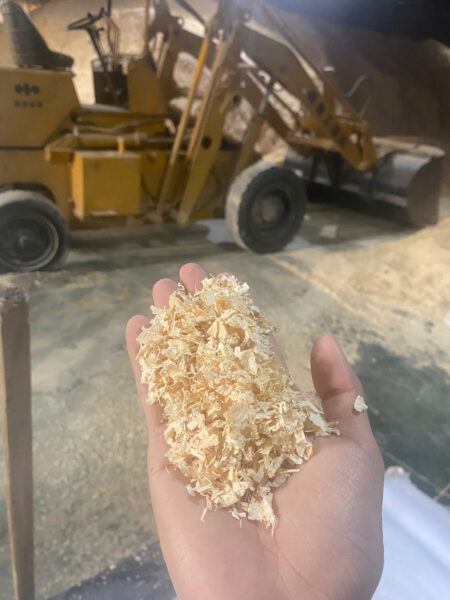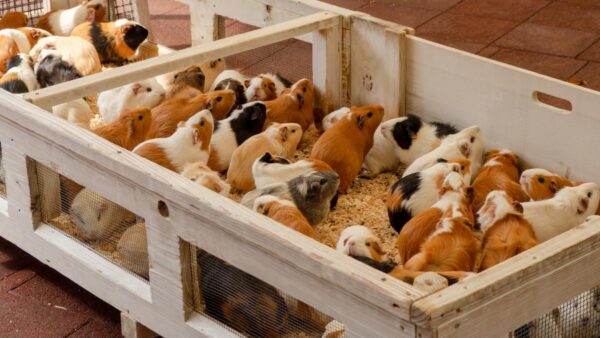Comparing Pine Wood Shavings to Other Wood Shaving Options for Bedding

When selecting bedding material for livestock, pets, or poultry, the choice of wood shavings plays a critical role in maintaining a healthy and comfortable environment. Among various options, pine wood shavings stand out due to their availability, affordability, and benefits. However, alternative materials such as cedar, aspen, and straw also have their advantages. This article will compare pine wood shavings to other wood shaving options for bedding, evaluating their pros and cons so that you can make an informed choice.
The Benefits of Pine Wood Shavings
Pine wood shavings are widely regarded as one of the best materials for animal bedding. Their popularity stems from several key advantages:
- Absorbency: Pine shavings are highly absorbent, which helps in keeping the bedding dry and reducing odors. This makes them particularly effective for animals that produce a lot of moisture, such as horses and poultry.
- Softness and Comfort: The soft texture of pine shavings provides a comfortable bedding material that cushions animals, reducing the risk of sores or injuries from prolonged lying down.
- Natural Odor Control: Pine shavings contain natural oils, such as phenols, that offer mild antibacterial properties and help neutralize unpleasant odors. This keeps the bedding fresher for longer periods.
- Readily Available and Affordable: Pine wood is one of the most commonly used woods, making its shavings readily available and generally more affordable than exotic woods like cedar or aspen.
- Ease of Cleaning: Pine shavings clump when wet, which simplifies the cleaning process. It is easier to spot and remove soiled areas, reducing the frequency of full bedding replacement.
Comparing Pine Wood Shavings with Other Bedding Options
Although pine wood shavings are a popular choice, there are alternative bedding materials available, each with its unique characteristics. Below, we compare pine wood shavings with some of the most common alternatives: cedar, aspen, and straw.
Cedar Wood Shavings
Cedar wood shavings are known for their pleasant aroma and natural insect-repelling properties. However, they come with certain drawbacks when compared to pine shavings:
- Advantages:
- Insect Repellence: Cedar contains natural oils that repel fleas, ticks, and other pests. This is especially beneficial for animals that are prone to infestations.
- Aromatic Scent: The strong scent of cedar is appealing to many people, creating a fresh-smelling environment.
- Disadvantages:
- Potential Health Concerns: Cedar’s strong aromatic oils may cause respiratory irritation in small animals, such as rabbits, guinea pigs, and birds. Prolonged exposure could also lead to skin allergies.
- Higher Cost: Cedar shavings tend to be more expensive than pine due to their scarcity and higher demand for specialized purposes.
- Conclusion: While cedar shavings are effective for insect control, they may not be the best option for animals with sensitive respiratory systems. Pine shavings are a safer choice for bedding in general, especially for small pets and poultry.

Aspen Wood Shavings
Aspen wood shavings offer another alternative that is often favored for small animals due to its low aromatic content and hypoallergenic properties.
- Advantages:
- Hypoallergenic: Aspen shavings are free from the aromatic oils found in pine and cedar, making them an excellent choice for animals with sensitive respiratory systems or allergies.
- Low Dust Content: Aspen shavings typically contain less dust than other wood shavings, which helps reduce the risk of respiratory issues, particularly in small pets and birds.
- Disadvantages:
- Lower Absorbency: Aspen shavings are less absorbent than pine, which means that bedding may need to be changed more frequently.
- Higher Cost: Aspen is often more expensive than pine, which can make it less practical for large-scale operations like horse stables or chicken coops.
- Conclusion: Aspen wood shavings are a suitable option for small animals that require hypoallergenic bedding. However, for larger animals or environments requiring high absorbency, pine wood shavings may be the more practical choice.
Straw Bedding
Straw, often used in barns and stables, provides a traditional bedding material for livestock. However, it is quite different from pine wood shavings in several respects.
- Advantages:
- Natural and Sustainable: Straw is a byproduct of cereal crops, making it an eco-friendly and sustainable option.
- Affordable: In many regions, straw is cheap and readily available, making it a cost-effective solution for large-scale animal bedding needs.
- Disadvantages:
- Lower Absorbency: Straw is far less absorbent than pine shavings, which can lead to moisture buildup and unpleasant odors in the bedding.
- Less Comfortable: Straw is rougher and less comfortable than pine shavings, making it less ideal for animals that require soft, cushioned bedding.
- Pest Attraction: Straw can harbor pests such as mites and insects, which may cause issues for animals.
- Conclusion: Straw is a viable option for large livestock or outdoor animals but lacks the absorbency, odor control, and comfort offered by pine wood shavings. For indoor pets or animals requiring a higher level of care, pine shavings remain the superior choice.
Choosing the Right Bedding for Your Animals
Selecting the appropriate bedding material for your animals depends on several factors, including the type of animal, its environment, and any specific health concerns. While pine wood shavings offer a balanced solution for many animals due to their absorbency, affordability, and comfort, other bedding options like cedar, aspen, and straw may also be suitable in certain situations.
- For Small Animals: Aspen wood shavings or paper-based bedding may be preferable due to the hypoallergenic properties and low dust content. Cedar is generally not recommended due to potential respiratory risks.
- For Poultry and Horses: Pine wood shavings are ideal for their absorbency and odor control, making them a top choice for large-scale operations where moisture management is key.
- For Large Livestock: Straw may be the most practical and cost-effective option, but it requires regular maintenance to ensure a clean and dry environment.

Final Thoughts
When comparing pine wood shavings to other wood shaving options for bedding, it’s clear that each material has its advantages and drawbacks. Pine shavings stand out as a versatile, absorbent, and affordable option for a wide range of animals. Whether you’re caring for small pets, poultry, or larger livestock, pine wood shavings provide a reliable and effective bedding solution.
If you prioritize comfort, absorbency, and ease of cleaning, pine wood shavings are hard to beat. However, if your animals have specific needs, such as sensitivity to aromatic oils or if you require insect repellent properties, other bedding options like aspen or cedar may be worth considering. Ultimately, the choice depends on your specific requirements and the well-being of your animals.
Read more: https://vietnambestwood.com/general/how-pine-wood-shavings/
